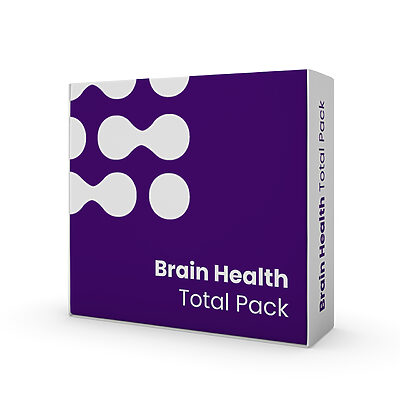
Breaking: CBG Week Starts Today, 50% Off Through Sunday, Sep 14
Save 50% on USA Medical CBG this week. Use code
By Jake Crossman (CNC-NASM), Nutrition Specialist; Holistic Health Coach; Managing Partner, USA Medical

The landscape of hemp and cannabis-derived products is continually evolving, with CBD historically taking the limelight for its array of health benefits.
Recently, however, CBG (cannabigerol) has emerged as a significant player, particularly in the realm of pain management. CBG, sharing a familial link with CBD, is gaining recognition for its efficacy in treating pain. Let’s explore how CBG stands out in managing pain, particularly nerve pain, in an accessible and informative manner.
CBG, although structurally similar to CBD, has a unique distinction as the “mother” of several cannabinoids, including CBD and THC.
The chemical precursor to CBG, CBGA, undergoes various transformations as the cannabis plant grows, leading to the development of different cannabinoids. This transformative ability enhances the plant’s chemical diversity to adapt to its ecological environment. In its early growth phase, the cannabis plant is rich in CBG, but this decreases as the plant matures, resulting in a lower concentration of CBG in full-grown plants.
This rarity often makes CBG more valuable and sometimes costlier.
CBG’s role in pain management is greatly enhanced when used in conjunction with other cannabinoids, creating a synergistic effect that amplifies its pain-relieving capabilities. This synergy is rooted in CBG’s distinctive interaction with the endocannabinoid system, a complex network that plays a crucial role in regulating various physiological processes, including pain perception.
One of the standout features of CBG is its non-psychoactive nature, making it an appealing option for those seeking pain relief without the mind-altering effects commonly associated with THC. This characteristic is particularly important for individuals who require consistent pain management but must maintain clarity and focus in their daily activities.
The ability of CBG to bind to both CB1 and CB2 receptors in the endocannabinoid system is central to its effectiveness in pain management. These receptors are distributed throughout the brain and body, playing a pivotal role in maintaining balance and health. CBG’s interaction with these receptors helps modulate the levels and activity of anandamide, often referred to as the “bliss molecule.” Anandamide is a naturally occurring cannabinoid in the human body that plays a significant role in regulating pain, mood, and appetite. By influencing anandamide, CBG can effectively alter pain signals, reducing the intensity and discomfort associated with various types of pain, including chronic and neuropathic pain.
CBG’s effectiveness in pain management, particularly when combined with other cannabinoids, highlights its potential as a significant player in the field of natural pain relief. Its unique interaction with the endocannabinoid system, ability to modulate key neurotransmitters, and non-intoxicating properties make it an attractive option for a wide array of pain sufferers, opening new avenues in the quest for effective, holistic pain management solutions.

The exploration of CBG (cannabigerol) in the field of nerve pain management is an area of growing interest and excitement within the medical research community. The promise that CBG shows in this domain is largely due to its nuanced interaction with the body’s endocannabinoid system, particularly its modulation of the CB1 and CB2 receptors. These receptors are pivotal in the way our bodies perceive and manage pain, as well as in regulating inflammation, which is often a contributing factor in chronic pain conditions.
CBG’s ability to influence these receptors can lead to a significant reduction in the transmission of pain signals. For individuals suffering from neuropathic pain, which is pain caused by damage to the nerves themselves, this can be a critical intervention. Neuropathic pain is notoriously difficult to treat with traditional pain management strategies, as it often does not respond well to standard painkillers like NSAIDs or even some stronger opioids. CBG offers a novel mechanism of action, different from traditional pain medications, which may be more effective for some individuals.
In addition to its role in diminishing pain signal transmission, CBG also plays a role in managing inflammation, which can be a major component of nerve-related pain. Chronic inflammation can exacerbate neuropathic pain and make it more difficult to treat. By mitigating inflammatory responses, CBG can address both the symptom (pain) and one of its underlying causes (inflammation), potentially offering relief where other treatments have been ineffective.
This dual action of CBG – reducing pain signal transmission and controlling inflammation – makes it a particularly compelling option for managing conditions that involve nerve-related issues. These conditions can include not only neuropathic pain but also other complex disorders like multiple sclerosis, fibromyalgia, and certain types of chronic headaches, which often involve both pain and inflammation.
The ongoing research into CBG’s effectiveness in nerve pain management is a testament to the evolving landscape of pain therapy. As our understanding of CBG’s mechanisms and benefits continues to grow, it holds significant promise as a powerful tool in the treatment of neuropathic and other nerve-related pain conditions, offering hope to those for whom traditional pain management strategies have been insufficient.
The combination of CBG and CBD in pain management products can create a synergistic effect, enhancing the overall efficacy in treating nerve pain and other chronic pain conditions. Each cannabinoid targets different aspects of pain and inflammation, with CBG focusing on modulating endocannabinoid receptors and CBD offering anti-inflammatory and analgesic effects.
This holistic approach to pain management is increasingly attractive for those seeking natural, non-intoxicating pain relief options.
In conclusion, the collaboration of CBG and CBD presents new, promising pathways for treating nerve pain and a range of chronic pain conditions. This natural, non-psychoactive alternative offers hope for individuals seeking effective relief from persistent pain.
While ongoing clinical research is essential to fully comprehend their safety and efficacy, the current understanding of these cannabinoids highlights their potential as valuable tools in pain management. As our knowledge of CBG’s capabilities expands, it stands as a testament to the evolving landscape of natural pain relief options, offering a glimmer of hope to those grappling with chronic pain.

My name is Jake. I'm a certified health coach, accredited nutritionist, and I want to make health easier for everyone.
We have the 'most advanced healthcare' in history, yet millions are still sick and on more medication than ever. My goal is to make holistic health more achievable for everybody.
I read all comments, so please let me know what you think!
These statements have not been evaluated by the FDA. USA Medical products are not intended to diagnose, treat, cure, or prevent any disease. Please consult with a healthcare professional before use.

Save 50% on USA Medical CBG this week. Use code

If your goal is comfortable, consistent relief, not a rollercoaster,

If you’re wondering whether magnesium glycinate for sleep is worth

What we mean by IBD, IBS, and Crohn’s IBD is

USA Medical CBG Oil works quickly and keeps working for

What Is CBG Oil? The Cannabinoid Behind the Buzz Cannabigerol


In stock | Free shipping

In stock | Free shipping

In stock | Free shipping

In stock | Free shipping

In stock | Free shipping

In stock | Free shipping

In stock | Free shipping

In stock | Free shipping